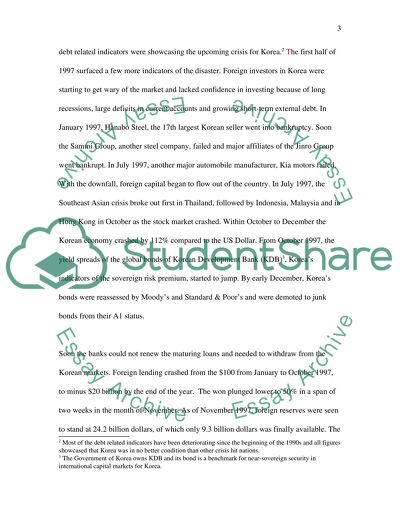Cite this document
(“South Korean Financial Crisis Case Study Example | Topics and Well Written Essays - 1500 words”, n.d.)
Retrieved from https://studentshare.org/politics/1500229-south-korean-financial-crisis
Retrieved from https://studentshare.org/politics/1500229-south-korean-financial-crisis
(South Korean Financial Crisis Case Study Example | Topics and Well Written Essays - 1500 Words)
https://studentshare.org/politics/1500229-south-korean-financial-crisis.
https://studentshare.org/politics/1500229-south-korean-financial-crisis.
“South Korean Financial Crisis Case Study Example | Topics and Well Written Essays - 1500 Words”, n.d. https://studentshare.org/politics/1500229-south-korean-financial-crisis.


